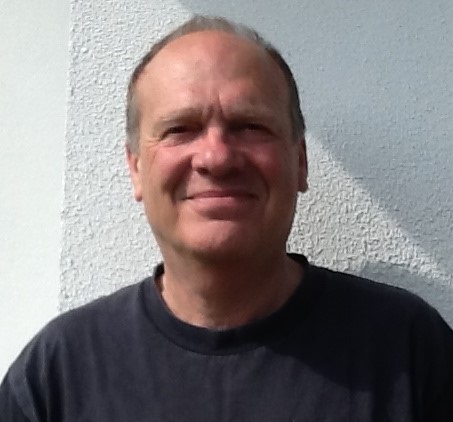- Learning
Developing Emerging Leaders
Professor Julie McCarthy explains the thinking behind Rotman School of Management’s executive program for up-and-coming leaders
This is the core belief underpinning the new High Potential Leadership program at The University of Toronto’s Rotman School of Management—young executives with three to five years’ experience, can through learning emerge as highly skilled leaders.
When it comes to identifying possible future leaders, Julie McCarthy, Professor of Organizational Behaviour and HR Management, who leads the High Potential Leadership program at Rotman, says that some individuals “display signs of high potential through their communication style, their confidence, their ability to engage others through charisma, and in the depth of their strategic thinking.” For others, because people’s underlying character and values are not always on the surface, “leadership potential is more of a slow reveal that becomes evident over time.”
Good leaders are ethical, honest, and trustworthy. These are essential characteristics to look for, delivered consistently over time. Emerging leaders should also have the capacity to build and maintain relationships, as well as an ability and determination to grow, learn and develop. “This gets to the crux—the fact that leaders are not just born,” asserts McCarthy, referencing her own and other studies on the behavioral genetics of leadership. “Between 20% to 30% of leadership characteristics may have a genetic component. What's important about that number is it means, 70% to 80%, can be learned—it's our environment, it's the experiences that happen to us, it’s the skills that we learn.”
…………………………………………………………………………………………………………
Dates: March 21-April 16, 2024 ⃒ Format: 8 sessions, live online
…………………………………………………………………………………………………………
While some individuals may have a certain genetic predisposition to be more emotionally stable or have more self-esteem, these are not decisive factors. “Leadership can 100% be trained,” declares McCarthy, “we can help individuals create that alignment where they become the kind of leader they want to be.” It is not about one perfect style or right way. In organizations it is essential to have diversity not only in who leaders are personally, but also in leadership styles. “Part of the leadership journey is figuring out the kind of leadership style that best aligns with who you are as an individual, with your values and with your personality,” says McCarthy. This is about authenticity. Whether a person is an introvert or an extrovert, or has one set of values or another matters less. “What really matters is that alignment piece.”
As far as the areas of development would-be leaders should focus on, “it’s a combination of personal skills and broader business capabilities.” Self-awareness, communication skills, and personal issues, such as learning to cope with anxiety are important. So too are the transactional aspects of leadership—getting tasks done, focusing the team on shared goals, building networks, and managing change.
Transformative Leadership
In designing the High Potential Leadership program, McCarthy has followed the Transformative Leadership model—an evidence-based model that has stood the test of time, originally developed by Bernard Bass. “It is about how we transform managers into leaders, and the focus is on change,” explains McCarthy, “the reason that I like this model so much is that it really encapsulates the important aspects of our teaching and research, and it is relevant regardless of what country, culture, or organization.”
Bass argued that a leader must be a role model able to inspire followers and challenge the existing order. He saw four roles for the transformational leader:
Inspirational Motivation. This is about the leader as a visionary, who makes people feel they are part of an enterprise with purpose and meaning. “As people move into leadership roles, it's not just about managing a portfolio and looking at what we need to do today,” says McCarthy “it's about leading in terms of change into the future—a year, five years, ten years from now—and how to inspire others to make those changes.” In the High Potential Leadership program there are sessions on how to use power and influence, how to create powerful messages and strategies to drive the change.
Individualized Attention. This is about people-centric leadership, building relationships and fostering diversity and equity. Through consistent actions and transparent decisions, the leader creates a culture of trust and integrity which allows for flexibility and openness to ideas and to change. This is the idea “that the leader is like a coach”, really getting to know the needs of their team. Here the program focuses on communication strategies, inclusivity and collaboration.
Intellectual Stimulation. This is where the leader values intellect, encourages imagination, challenges established ways, and champions new ideas, experimentation, and continuous improvement. Here the High Potential Leadership program focuses on critical strategic thinking and problem-solving skills to encourage innovative and creative solutions.
Idealized Influence. This is the leader as a role model who inspires followers to want to follow through their empathy, and personal integrity and ethics. Here the “leader is a role model” offers McCarthy, where “you have to know your people, and understand their needs, values and aspirations in order to succeed.” Essentially this a about providing growth opportunities and development plans tailored for individual team members. Here the program focuses on team building and inspiring collaboration through mentorship and coaching
In explaining how the High Potential Leadership program is designed in alignment with the transformational leadership model, McCarthy says, “We adopt a very practical approach to teaching leadership, helping emerging leaders to develop the skills that can really enable them to be elevating and transforming for their team members.”
Barriers to Realizing Potential
Leaving behind past ways of thinking and cultivating a transformational leadership mindset is the main barrier to be overcome when stepping up to leadership, from a previous unit manager or professional/expert role. As McCarthy describes it, “Individuals with little experience leading people, but a lot of experience managing their own portfolio and working in the present, must transition to a mindset of ‘I'm in a leadership role, and I have the capacity to stimulate and initiate change’.”
Another barrier comes with taking on the greater responsibility of being a leader. Here there is the need to develop the emotional intelligence and resilience to navigate high-pressure situations and lead effectively amidst challenges. Leaders must build self-awareness, manage stress, and learn to genuinely empathize with others if they are to maintain composure during stressful situations. “It's about that self-awareness piece. Really taking stock of what knowledge I have. What are my skills and abilities? Where am I right now? And where do I want to get to on this leadership journey?”
Managers stepping up to leadership must also shift their focus towards people management and motivating teams. “We know that teams can be great, but teams can also fail.” So, developing skills to empathize with, and inspire people to resolve conflicts and deal with difficult individuals is important. Fostering diversity is also important—but beware of box-ticking. “Leaders need to be intentional and genuine in the way that they talk about inclusivity,” asserts McCarthy. “It doesn't mean that everybody is invited to everything. It means that we are an organization that genuinely supports equity, diversity, and inclusion.”
‘Change’ presents the final significant barrier. Change is difficult for leaders and followers alike. It is critical that leaders develop the personal adaptability and the effective change management skills to be able to guide their team through organizational shifts and new strategies, navigating evolving technologies, and market turbulence. A further aspect of this is the concept of ‘participative leadership’—the leader knowing to what extent to engage the team in decisions, when to step in and when to step back and allow team members space. “You don't want to overload people,” points out McCarthy, “but you do want to give them intellectual stimulation, to think it out for themselves. It’s about ensuring that your team has autonomy but at the same time is not overloaded.”
Another concern, which is not so much a barrier, is about learning to take account of the way people are. Everyone is different. Do not assume others will think as you do. People’s different approaches due to their gender or their personalities are something that empathetic leaders need to be aware of. The faculty delivering the Rotman program make a point of acknowledging differences too. “We focus on skills like mindful listening, strategic thinking, self-awareness, relationship building and conflict management—regardless of whether you're an introvert or an extrovert. We believe that everyone has the capacity to improve their leadership skills.”
Needs of Today’s Workforce
Beyond the fundamental skills of transformational leadership, it is necessary to adapt to the changing needs and desires of the current workforce. Gen Zs are going to account for 25% of the workforce by 2025 and it is their outlook that is likely to most influence how new leaders—probably from the millennial generation—will work.
“Gen Zs are super educated, industrious, and ambitious. They're the first fully digital generation and they've lived through great upheaval, COVID-19, and economic uncertainty,” observes McCarthy. “Leaders need to be aware that Gen Zs want to work but are looking for purposeful work and they expect to have feedback and recognition.” They will also be looking for balance and flexibility in their lives, and for continuous learning. What this means is that leaders need to align their goals with things that are meaningful for these employees. “They need to understand the values and vision of each team member. This links back to the individual consideration, vision, and ethics components of transformational leadership.”
On top of this, leaders need to keep themselves and their teams up-to-speed with AI and other technological developments, with changing market threats and opportunities, and more general societal trends. Pressure to achieve environmental, societal, and corporate governance goals is currently high on the agenda and so a leadership responsibility. Employee wellbeing, at a time when burn-out seems to be rife, is another essential priority for leaders.
The High Potential Leadership Program
Traditionally, organizations tend to invest in training people at the top. Today, when leadership happens at all levels there is a greater need than ever to develop emerging new leadership potential. Given that “leadership is about inspiring and influencing others” there is good reason to start early on.
The High Potential Leadership program at Rotman is aimed at people with three to five years’ experience. It is delivered all online in order to reach a wider global audience, and to be easier on participants’ time. “We have had great success with our virtual learning executive programs and take great strides to ensure that they are comprehensive, interactive and highly engaging,” boasts McCarthy. “We do this by using multimedia, case studies, simulations, group discussions, and real-life examples to keep participants engaged and actively learning.” The program is also focused on ensuring that participants are able to network with like-minded others. McCarthy notes that “the sessions are highly interactive and encourage participation and collaboration among participants. And there is space for networking opportunities—virtual breakout rooms simulate small group discussions, allowing participants to connect and exchange ideas.”
Ultimately, this evidence-based program is innovative, unique and certain to help you improve your leadership capacity.
…………………………………………………………………………………………………………………..

Julie McCarthy is Professor of Organizational Behavior & HR Management at The University of Toronto’s Rotman School of Management. Her research examines strategies that employees can use to build resilience, reduce stress, and achieve success in their work and home lives. She also studies how organizations can ensure that their policies and practices are viewed favorably by job applicants and employees. Julie has collaborated on research initiatives, training programs, performance management systems and selection tools on behalf public and private corporations that include CIBC, Deloitte, Microsoft, TMX, and Rogers, among others.
Rotman School of Management is Canada’s leading business school and has Canada’s largest group of management faculty. It is home to some of the most innovative research institutes in the world
ARTICLES YOU MIGHT LIKE
VIEWPOINT
emlyon business school’s custom-training program director, Gilles Basset, reveals the potential for generative AI to improve executive education programs
DEVELOPING LEADERS QUARTERLY MAGAZINE AND WEEKLY BRIEFING EMAILS

































